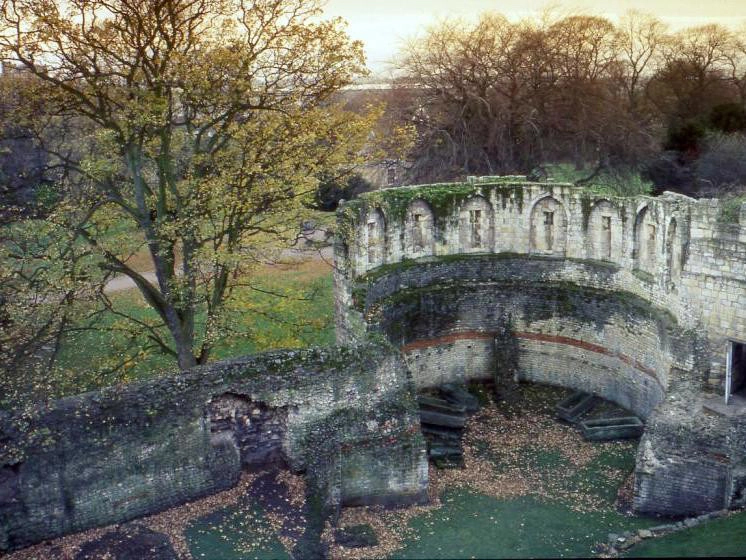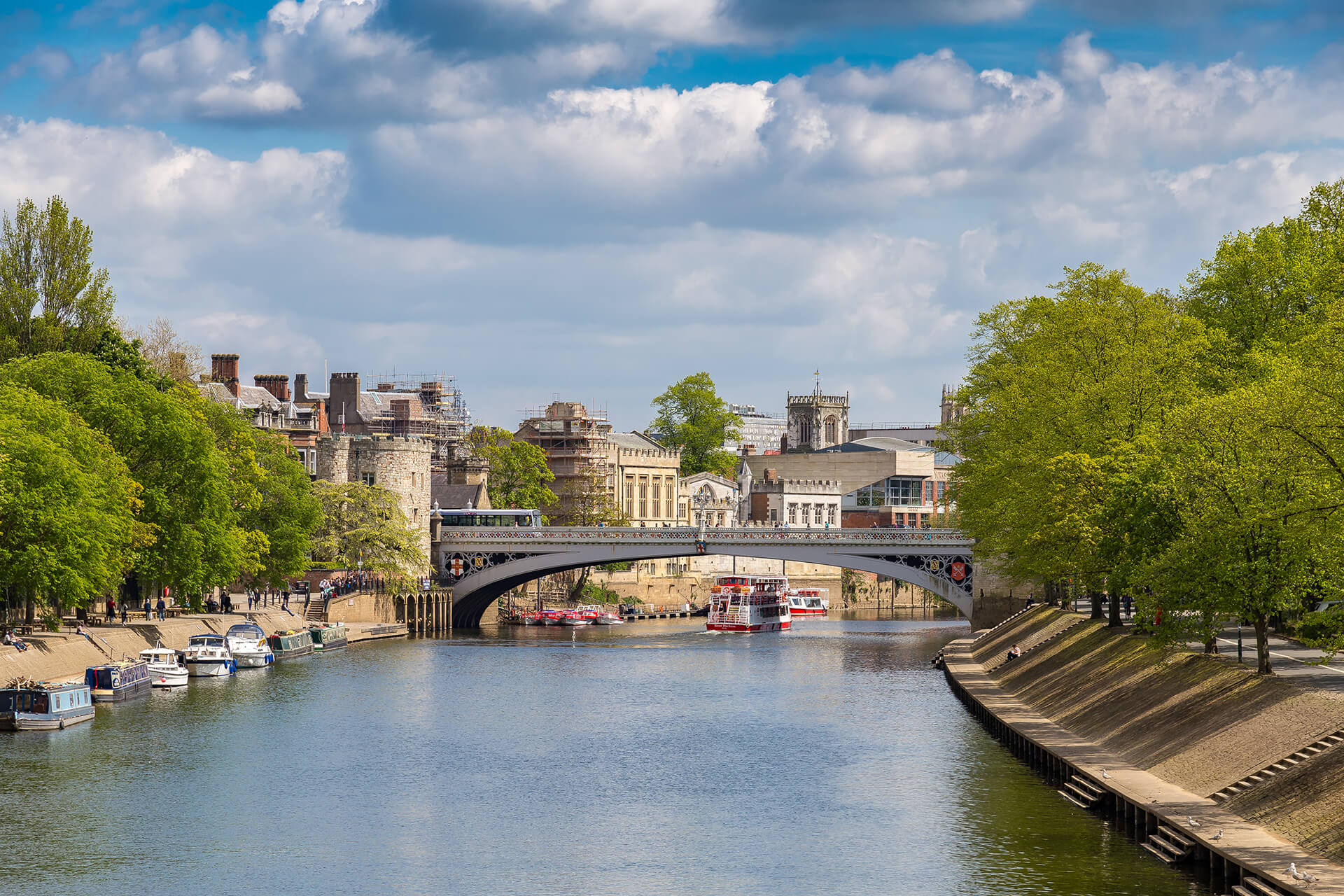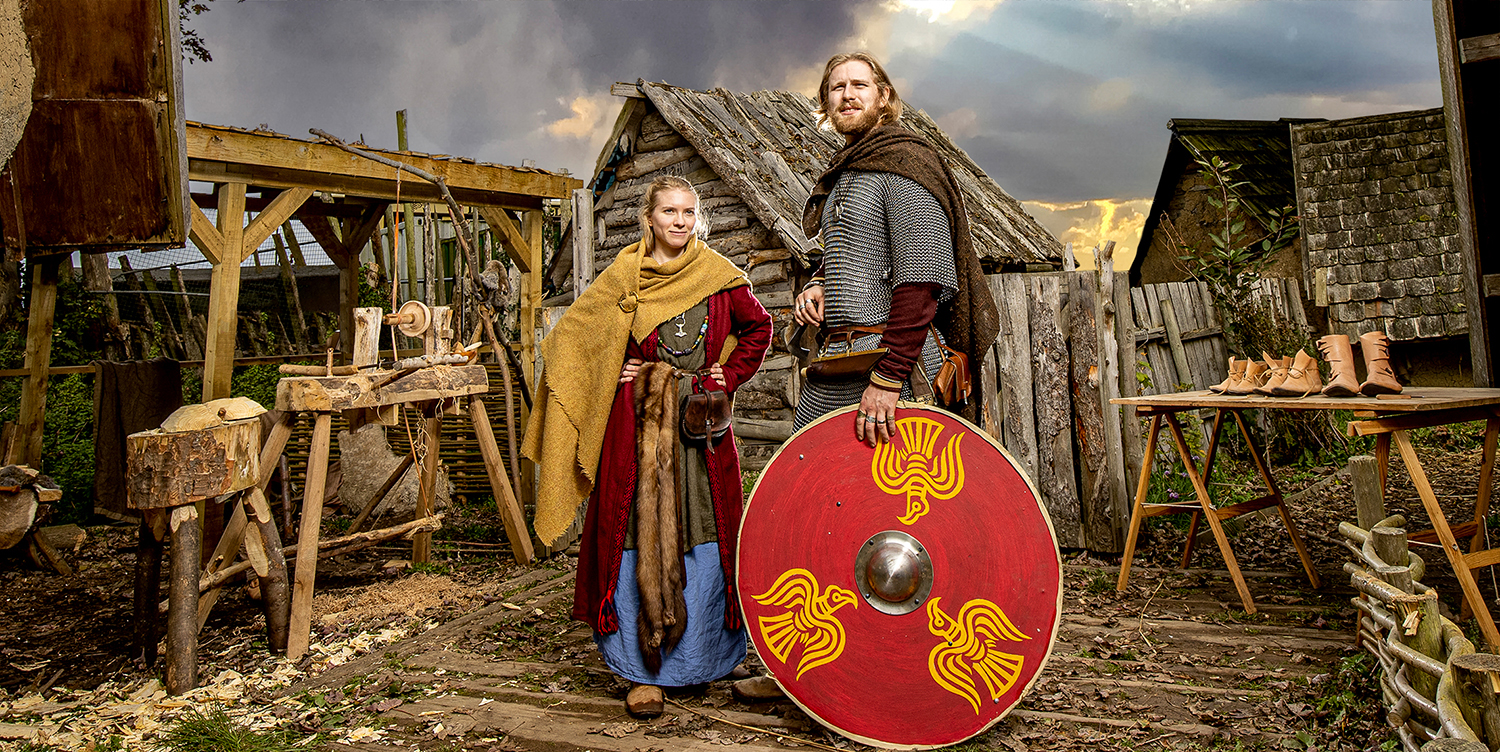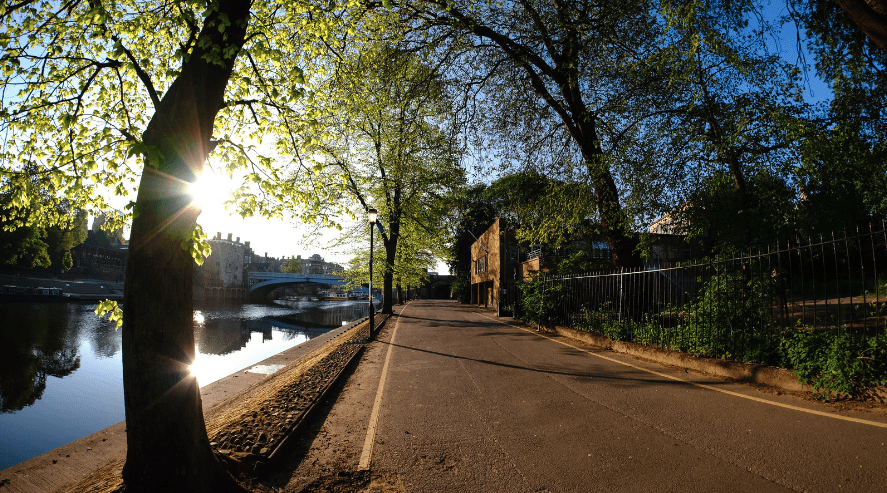The Rise and Fall of Roman York
The city of York, now known as Eboracum, was established by the Romans in 71 AD. The Roman army invaded Yorkshire and established a fort between the rivers Ouse and Foss. Over time, a small town emerged by the fort as craftsmen and merchants sought to live near the soldiers, who provided a market for their goods. The River Ouse was also a key factor, allowing ships to sail up to the town.

Eboracum, believed to have originated from Celtic words meaning “the place with yew trees,” was thriving by the early 3rd century. The town was protected by a stone wall, and boasted public buildings such as baths, as well as luxurious homes with mosaic floors for the wealthy residents.
However, the decline of the Roman empire was reflected in York as well. By the 4th century, the Roman civilization was in decline, and the last soldiers eventually left Britain in 407 AD. The once-thriving town was abandoned and fell into ruins, marking the end of an era for Roman York.
Medieval York: A Tale of Transformation
The city of York underwent significant changes in the Middle Ages, from a near-abandoned Roman settlement to a thriving centre of trade and commerce. In 627, a bishop was appointed in York and a cathedral was constructed within the walls of the old Roman town. This led to a revival of the town during the 8th and 9th centuries as it became an ideal location for trade, attracting craftsmen and merchants. By the mid-9th century, the town had grown to a population of around 2,000.
In 866, the Vikings took control of northern England and made York the capital of their new kingdom, leading to a boom in its growth and commerce. The town became known for its wool weaving, blacksmithing, pottery making, and other crafts, including the production of bone and antler combs.
The Norman Conquest in 1066 brought further growth and prosperity to York, with a population estimated at 9,000 to 10,000. William the Conqueror built two wooden castles in the city, but faced opposition and rebellion, ultimately sacking the city. In 1190, a massacre of Jews took place in York and a new tower, Clifford’s, was built in the mid-13th century to replace the previous castle. In 1212, King John granted York a charter for self-governance.
Medieval York was a bustling port city, importing wine from Europe and also a hub for wool production, fulling, dyeing, and leather goods such as gloves, shoes, and saddles. The city was home to numerous craftsmen, hospitals run by the church, monasteries, and friars who went out to preach. In the late Middle Ages, York saw the construction of grand buildings such as the Merchant Adventurers Hall, Guildhall, York Minster, and St Williams College.
Despite the devastating impact of the Black Death in 1349, which may have claimed half the city’s population, York continued to thrive and by the mid-14th century had a population of around 13,000, falling to about 10,000 by 1500. The city’s annual fairs, drawing people from all over Yorkshire, and its religious institutions, such as the abbey dedicated to St Mary, only added to its prestige and significance in the Middle Ages.
York in the 16th and 17th Centuries
In the 16th and 17th centuries, York remained a key town in northern England, boasting a population of approximately 10,000 in 1500 and increasing to around 12,000 in 1600, despite frequent outbreaks of the plague. Henry VIII’s closure of religious institutions and reduction of parish churches in the town, as well as the decline of the textile industry due to competition, had a significant impact on York during this time period.
International shipping from York dwindled, but coastal trade continued to be significant. During the Civil War, most of York’s inhabitants supported the king, leading to a siege by parliamentary forces in 1644. However, the town was eventually captured and surrendered in July of that year.
By the late 17th century, York had a piped water supply available to those who could afford it, and the population likely reached around 13,000.
18th Century York: A Market Town with a Thriving Port

While York lost some of its prominence in the 18th century as other northern towns saw rapid growth, the city still maintained a significant size. As a market town, it was home to a diverse range of craftsmen including butchers, brewers, bakers, tailors, shoemakers, coopers, comb makers, jewellers, and pipe makers, as well as booksellers and wine merchants. Meanwhile, the port of York continued to prosper.
The 18th century brought advancements to York, such as the launch of the city’s first newspaper in 1719, the construction of Assembly Rooms for the wealthy to attend social events and play cards, and the opening of the first theater in 1736. In addition, New Street was built in 1746, while medical facilities improved with the construction of York County Hospital in 1740, a lunatic asylum in 1777, and a dispensary offering free medicine to the poor in 1788. The city also saw a man appointed as a scavenger to clean the streets of animal dung and other waste in 1786.
19th century York
The 19th century was a time of growth and change for York, England. At the start of the century, the town had a population of 16,846, but it would see rapid expansion in the following years. Although York remained primarily a market town, with a variety of craftsmen, the arrival of the industrial revolution saw other towns in Yorkshire grow more rapidly.
However, the railway system helped put York on the map. The Leeds to York railway opened in 1839, followed by the York to Scarborough line in 1845, and a connection to Hull by 1865. York became well-known for railway carriage production and the repair workshop that opened in 1842. Other major industries in the late 19th century included confectionery, cocoa, flour milling, and optical instrument manufacturing.
The population of York grew dramatically during the 19th century, leading to new housing developments outside the town walls. The 1840s saw a significant influx of Irish immigrants escaping the potato famine. Despite the growth, however, conditions in York were still quite poor. The town faced epidemics of cholera in 1832 and 1849, as well as a deadly outbreak of typhus in 1847 that claimed 403 lives.
Despite these challenges, improvements were made in the 19th century. In 1824, gas street lights were introduced and the Improvement Commissioners were formed in 1825, tasked with paving, lighting, and cleaning the streets. They were replaced by a Board of Health in 1850. York’s police force was established in 1836 and horse-drawn trams ran in the streets from 1880. The town also saw the opening of the Art Gallery in 1892 and its first public library in 1893.
The Rapid Growth of York in the 20th Century
At the turn of the 20th century, the city of York was thriving with a population of 77,914 and continued to grow at a steady pace, reaching 105,000 by 1951. A major milestone in transportation in York came in 1909 when the city’s trams shifted to electricity, but eventually made way for motor buses, with the last tram running in 1935.
The confectionery industry boomed in York during the early 1900s, due to an increase in living standards and more disposable income for the purchase of sweets. By mid-century, confectionery had become the primary industry in the city, with additional industries such as sugar, railway coach manufacturing, and optical instrument production.
In the 1920s and 1930s, the York council made efforts to clear slum areas and construct council houses. Unfortunately, during World War II, the city was bombed, resulting in 87 casualties from bombing raids, with the worst raid occurring on April 29th, 1942 and damaging the church of St Martin le-Grand by fire.
However, York quickly rebounded and saw the construction of numerous council houses after the war, becoming a thriving city once again. In 1951, the city hosted its first York Festival and founded York University in 1963. A ring road around the city was built in 1987 to accommodate its growth.
Today, tourism plays a significant role in York’s economy with the National Railway Museum opening its doors in 1975 and the Jorvik Viking Centre in 1984. The city also serves as a regional shopping hub, with the addition of the Monks Cross Shopping Park in 1998.
York in the 21st century
York has undergone significant changes in the 21st century. In 2021 the population of York was 202,000.
2000s:
- The turn of the millennium saw the completion of several major development projects in York, including the expansion of the University of York and the construction of a new shopping center, Monks Cross.
- In 2003, the city was designated a UNESCO World Heritage Site, recognizing its rich cultural and architectural heritage.
- The early 2000s also saw the growth of the city’s tourism industry, as more and more visitors were attracted to York’s rich history and heritage.
2010s:
- The decade started with the opening of the National Railway Museum’s Great Hall in 2010, which was a major addition to the city’s tourist attractions.
- In 2014, York’s Central Library was redeveloped and expanded, providing the city with a modern, state-of-the-art facility for its residents.
- The city’s transport infrastructure was also improved in the 2010s, with the introduction of new train services, the expansion of the city’s park-and-ride network, and the completion of a new cycle path network.

2020s:
- The COVID-19 pandemic had a significant impact on York in the early part of the decade, with many businesses and tourist attractions closing temporarily.
- The city has since started to recover, with the reopening of many of its popular tourist attractions, including the JORVIK Viking Centre and the York Dungeon.
- In 2020, a new housing development was completed in the city’s Clifton area, providing much-needed new homes for the city’s growing population.
The 21st century has seen York continue to evolve and grow as a city, while also maintaining its rich cultural and architectural heritage. Despite the challenges posed by the COVID-19 pandemic, the city remains a vibrant and attractive destination for both residents and visitors.




